Hiking to the Rio Celeste waterfall should definitely be at the top of your Costa Rica bucket list, but there are a few things you should know before you go!
*Disclaimer: This post contains affiliate links. If you make a purchase through a link we will receive a small commission at no extra cost to you. Thank you for your support!
11 Things to Know Before Hiking Rio Celeste Waterfall
Table of Contents
- 1. How do you get to the Rio Celeste waterfall?
- 2. Is there a fee to hike to the Rio Celeste waterfall?
- 3. When is the best time to visit Rio Celeste?
- 4. What amenities are located at Rio Celeste?
- 5. How muddy is the trail to the Rio Celeste waterfall?
- 6. How long is the Rio Celeste hike?
- 7. Is it worth hiking past the Rio Celeste waterfall?
- 8. What is there to see after the Rio Celeste waterfall?
- 9. What makes the Rio Celeste water blue?
- 10. Can you swim in Rio Celeste?
- 11. What animals can be found at Rio Celeste?
1. How do you get to the Rio Celeste waterfall?
The Rio Celeste waterfall is located within Tenorio Volcano National Park. It is about 1 1/2 hours from either Fortuna or Liberia.
There are no direct bus routes to Rio Celeste, although you can take a bus to the neighboring town of Bijagua and take a taxi into the park.
However, I would recommend taking a tour or renting a car. If you are renting a car, there are a few things to note.
Costa Rica is notorious for its vague maps, lack of street addresses, rough roads, and less than ideal driving conditions.
Please refer to this Costa Rican traffic jam we encountered on our way to Rio Celeste!
Apple Maps will not work for giving driving directions in Costa Rica, most locals and tourists rely on the Waze app. We did find that the Google Maps app worked fine too.
With that being said, if you enter “Rio Celeste” into your maps app, it may take you down a long dirt road to a random crossing point of the Rio Celeste river. We learned this the hard way.
Be sure to specify and enter “Rio Celeste y Los Tenideros” or “Catarata Rio Celeste” as your destination. You can also enter “Soda El Pilón” which will take you to the restaurant located at the trailhead.
For the most part, the roads leading to Rio Celeste are paved and in decent condition so you shouldn’t have any problems. However, this also depends on where you are coming from.
We had to drive a few miles on a rough unpaved road when coming from The Springs Resort near Fortuna. We were able to make the drive with a sedan, but we just had to take it slow.
If you’re coming from the northeast and are taking the road from Katira then be prepared that the road is filled with potholes for a few miles as well, but a 4wd or a high clearance vehicle is not necessary.
2. Is there a fee to hike to the Rio Celeste waterfall?
There is no entrance fee to drive into Tenorio Volcano National Park, but there is a parking fee and an entrance fee to hike to Rio Celeste waterfall.
As of February 2022, the parking was $4 cash only. There is a large parking lot across from the hiking trail with parking attendants collecting the parking fee.
Entrance to the trailhead is $12/adults and $5/kids ages 5-12 years. Credit and debit cards only, no cash is accepted. No advanced reservations are available, it is first come first serve only.
The hike is also self-guided so there is no additional fee for a guide.
3. When is the best time to visit Rio Celeste?
Rio Celeste is a popular tourist destination so it is recommended to come first thing in the morning or later in the afternoon in order to avoid the crowds.
The park limits the number of visitors to 500 people at a time and a maximum of 1,200 visitors per day.
If there are more than 500 people on the trail you’ll need to wait until more people exit the trail.
If the maximum for the day has been reached then you’ll be turned away.
The park is open from 8 am-4 pm, but keep in mind that the last entrance is at 2 pm. Plan to arrive before 9 am in order to avoid the crowds and guarantee entrance during peak season.
Alternately, the waterfall is the first stop on the trail so if you arrive around 1 pm you can skip the waterfall and hike to the end of the trail first then catch it on your way back.
By then the crowds will have thinned out, but it is a little risky that you might miss it altogether if there isn’t enough time.
The ticket office is also sometimes unofficially closed for lunch so you may have to wait a little bit if you arrive around noon.
The best time of year to visit is during the dry season from December-April.
During the rainy season, the iconic blue water can sometimes be muddied after heavy rain. It doesn’t happen often, but it’s worth checking beforehand if it has been particularly rainy.
The park will often close during inclement weather as well. If you are in doubt, contact the number on the National Park website or check the Facebook page to inquire about water conditions, weather updates, and closures before you visit.
4. What amenities are located at Rio Celeste?
Restrooms and drinking fountains are located at the ticket office.
I had read previously that single-use plastic water bottles are not permitted inside the park. They also have signs at the entrance stating this, however, they were not enforcing this rule when we visited.
They do have a backpack check before entering the park to look for contraband items (drones are not allowed at Rio Celeste, so keep those locked in the trunk!), but when we visited they were allowing visitors to bring in single-use water bottles.
I would still recommend bringing a reusable water bottle just in case.
You’ll also find Los Pilones restaurant just outside of the park along with a handful of fruit stands and food vendors.
We picked up batidos con leche at Los Pilones. These are delicious fresh fruit smoothies with milk that can be found all over Costa Rica. Just be sure to get it ‘con leche’ (with milk) not ‘con agua’ (with water).
Across the street, you’ll find a food vendor selling grilled elote (corn on the cob) and kebabs.
It’s the perfect post-hike snack so be sure to stop and pick some up after your hike!
If you are looking to stay near Rio Celeste, the Rio Celeste Hideaway Hotel is a great option.
It would be a good idea to snag a hotel close to Rio Celeste to ensure that you are there early enough to be guaranteed a spot and avoid the crowds.
5. How muddy is the trail to the Rio Celeste waterfall?
This depends entirely upon how rainy it has been before and during your visit. Considering it rains quite often in Costa Rica, then chances are the trail will be somewhat muddy.
Some portions of the trail are paved, covered in gravel, or have concrete steps, but other portions can feel like you’re walking through muddy soup.
We visited during the dry season and regular tennis shoes were fine as we only experienced one particularly muddy portion of the trail.
However, if you are visiting during the rainy season, you may want to save your shoes and consider renting boots. There are several vendors around the parking lot that rent rubber boots for $5.
It should also be a given that this trail is not stroller-friendly, but we did see a family attempting to push a stroller on the trail and it didn’t end well.
6. How long is the Rio Celeste hike?
The full trail is 3.5 miles total with an elevation gain of 793 feet. It is often referred to as the “waterfall loop trail”, however, it is an out-and-back trail, not a loop.
The trail is well marked and easy to follow, so no need to worry about getting lost.
From the parking lot, it is 0.9 miles to the top of the Rio Celeste waterfall referred to on the map as “Entrada a Catarata”.
From here, a side trail leads to the left down a series of 250 concrete steps (about 0.1 miles) to the base of the waterfall with stunning views all along the way.
As you make your way down the steps, you’ll soon catch a glimpse of the bright turquoise water peeking through the trees.
There is a viewing deck at the base of the waterfall where it truly is astounding to see the waterfall plummeting almost 100 feet into a brilliant blue pool.
Just be prepared that you’ll most likely be sharing the viewing deck with a few dozen other tourists.
After you make your way back up the steps, you can choose to continue along the trail or return back to the parking lot.
7. Is it worth hiking past the Rio Celeste waterfall?
Arguably, the Rio Celeste waterfall is the main attraction, everything else is just a supporting cast.
However, if you have the time then there are a few interesting sights to see as you continue along the trail past the waterfall.
You’ll also find that the crowds significantly thin out past the waterfall so you will be able to enjoy the radiant blue water with some peace and quiet.
We visited when the trail was dry and was able to complete the entire hike in just under 2 hours with time to stop and take photos. However, under muddy and rainy conditions it can take almost twice as long.
If you are visiting during the rainy season, the trail after the waterfall is not as well maintained and can get especially muddy with lots of tree roots and rocks to navigate over.
This can add a significant amount of time, and I would probably say it wouldn’t be worth it to continue past the waterfall, but that is up to you!
You’ll also hear a lot of references to the long steep staircase leading down to the waterfall, but keep in mind that those are not the only stairs on the trail!
As you continue past the waterfall you’ll encounter more series of steps along the trail as you make your way up the mountain and down to the river.
If stairs are a challenge for you, you may not want to continue past the waterfall.
8. What is there to see after the Rio Celeste waterfall?
The Rio Celeste waterfall can be found around the halfway point on the trail. Continue for another 3/4 mile or so to see a few additional sites before reaching the end of the trail.
Mirador
After continuing along the trail past the waterfall, you’ll come to “Mirador”. You’ll find an informational sign and a lookout point over the rainforest to the Guanacaste Volcanic Mountain Range.
In the distance, you can spot three of the four peaks that make up the Tenorio Volcano. It’s worth a quick look but I wouldn’t spend too much time here.
Laguna Azul
Shortly after Mirador, you’ll take some steps leading down to Laguna Azul, a beautiful serene blue lagoon.
This fairytale lagoon is like something you would see in a Disney movie.
Take a few moments to soak it all in then continue on.
Los Borbollones
Los Borbollones may look like nature’s most beautiful hot springs, but what you see (and smell!) is sulfuric gasses from the volcano bubbling up in the river.
Keep in mind that swimming or entering these thermal hot springs is prohibited.
Wooden bridges
Up until this point, I was thinking that it wasn’t really worth continuing on the trail past the waterfall. But then we came to a rustic wooden bridge over the bright blue water and I was smitten!
The first bridge you’ll come to is over the uncolored portion of the river, but you’ll find an explosion of color at the second bridge!
There is a small clearing on the other side of the second bridge where you can capture the perfect shot of the bridge suspended over the electric blue river with the rainforest in the backdrop.
The water is a richer blue in this part of the river, and it looks like you’re walking over a stream of Kool-aid.
It’s hard to believe places like this really exist and it’s worth the extra hike just to witness it in person.
El Tenideros
The trail ends at El Tenidero. This is the origin of the iconic blue river where the Buena Vista River (Rio Beunavista) meets Sour Creek (Quebrada Agria).
Here you’ll witness a scientific wonder known as ‘Mie scattering’ as the minerals of the two rivers converge and flow into one vibrant sky blue current. It is quite a marvel!
You’ll find an informational plaque explaining the process and why the river looks blue.
After spending some time here, head back up the trail the way you came.
*Related Post: If you want to see 5 unique waterfalls on a short 2-mile trail, then visit La Paz Waterfall Gardens!
9. What makes the Rio Celeste water blue?
It is interesting to note that the Rio Celeste water itself is not actually blue, it is an optical illusion.
I love the local legend claiming that after God painted the sky he dipped his brush in the Rio Celeste. Unfortunately, the real explanation is not as poetic, but still fascinating.
Allow me to be a little scientific for a moment as I try to explain the phenomenon.
The mineral known as aluminosilicate (aluminum, silicon, and oxygen) increases in size at El Tenidero where the acidity level changes as the two rivers converge.
The majority of the mineral remains suspended in the water where the mineral particles scatter sunlight , similar to the effect of raindrops forming a rainbow.
However, due to the particular size of the aluminosilicate particles, only the bluish tones of white light are dispersed resulting in the brilliant blue water.
10. Can you swim in Rio Celeste?
I know it can be tempting to take a dip in the ethereal blue water, but swimming in the Rio Celeste waterfall or river is prohibited anywhere inside of Tenorio Volcano National Park.
However, there is a blue pool just outside the park that visitors are allowed to swim in. You can’t miss it, it’s found just off the side of the road as you drive in and out of the park.
You’ll see designated parking along the road near the bridge where the blue swimming hole can be easily accessed.
You can also find the pool on Google Maps by entering “Rio Celeste Free Pool”. The cool water is refreshing after a long hike!
Other options include stopping at the Piruri Cabinas lodge where you can pay $6 per person to swim in the river.
You can also take a Rio Celeste tubing tour where guests can float almost 2 miles along the tranquil blue water.
11. What animals can be found at Rio Celeste?
As you are hiking through the rainforest, keep your eyes peeled for some local wildlife.
While it can often be hard to spot these animals in the wild, Rio Celeste and Tenorio Volcano National Park is home to three of Costa Rica’s monkey species: the howler, spider, and white-faced monkey.
In addition, the rainforest is teeming with armadillos, sloths, coatis, collared peccaries, tapirs, anteaters, and a variety of snakes (some of which are poisonous so keep an eye out!).
I hope this guide has helped you know what to expect as you plan your hike to the Rio Celeste waterfall. It truly is a magical experience and one of our favorite stops on our 5 Day Costa Rica Itinerary!
*Related post: If you are planning to spend time in La Fortuna, be sure to see our guide to 6 Fun Things to do in La Fortuna Costa Rica!
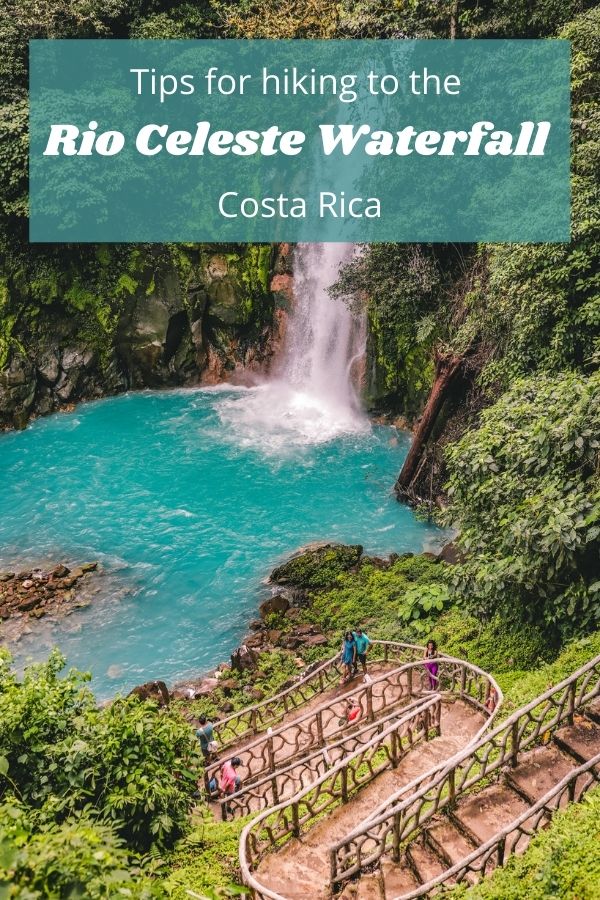
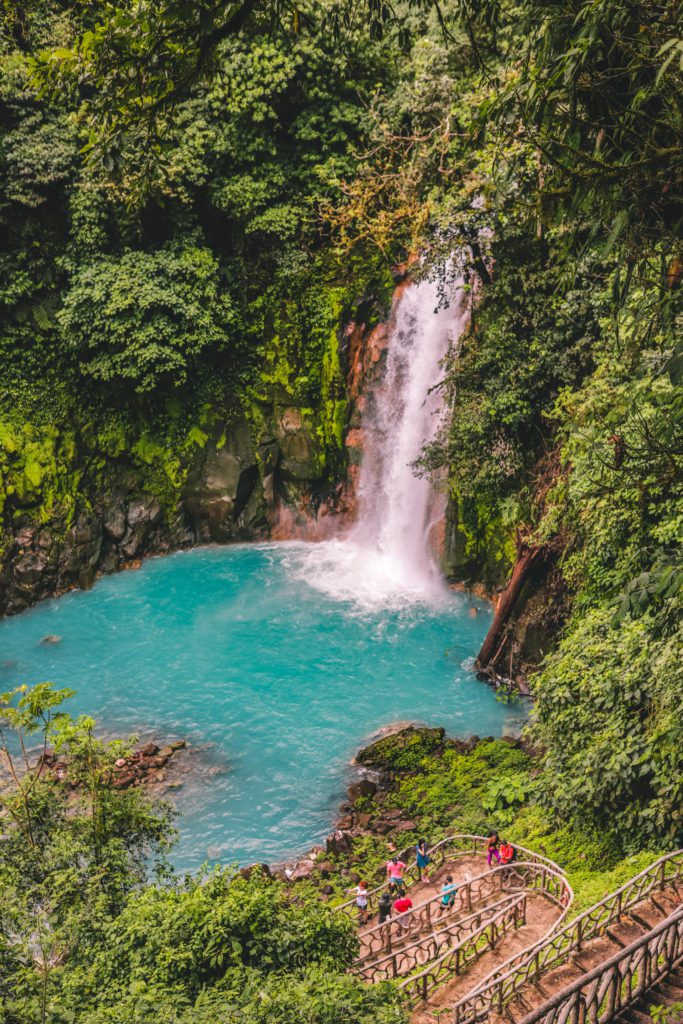
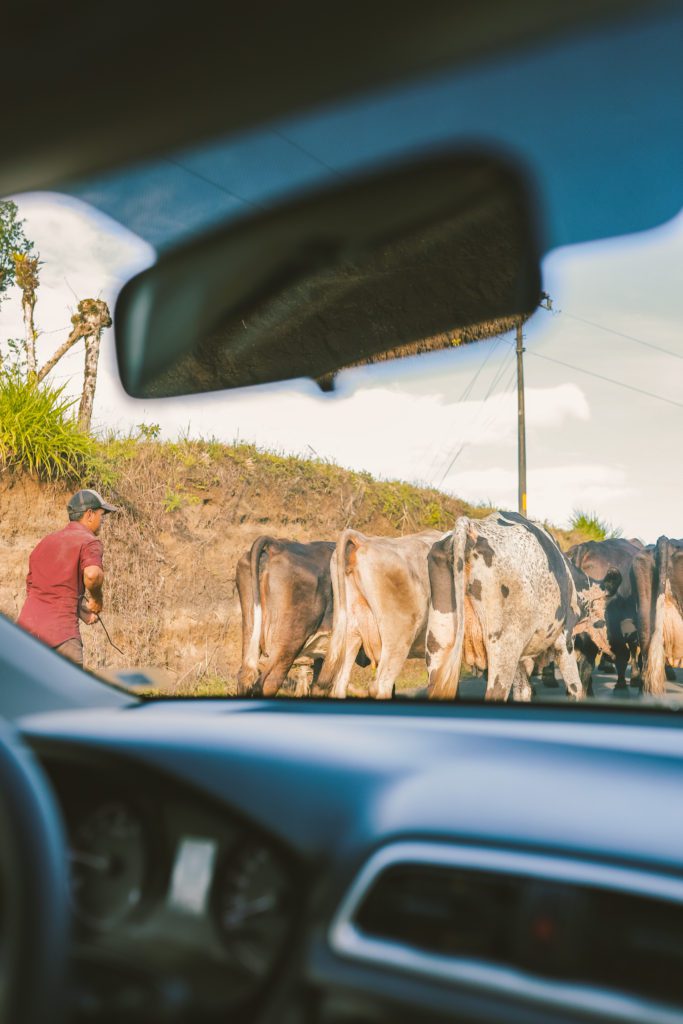
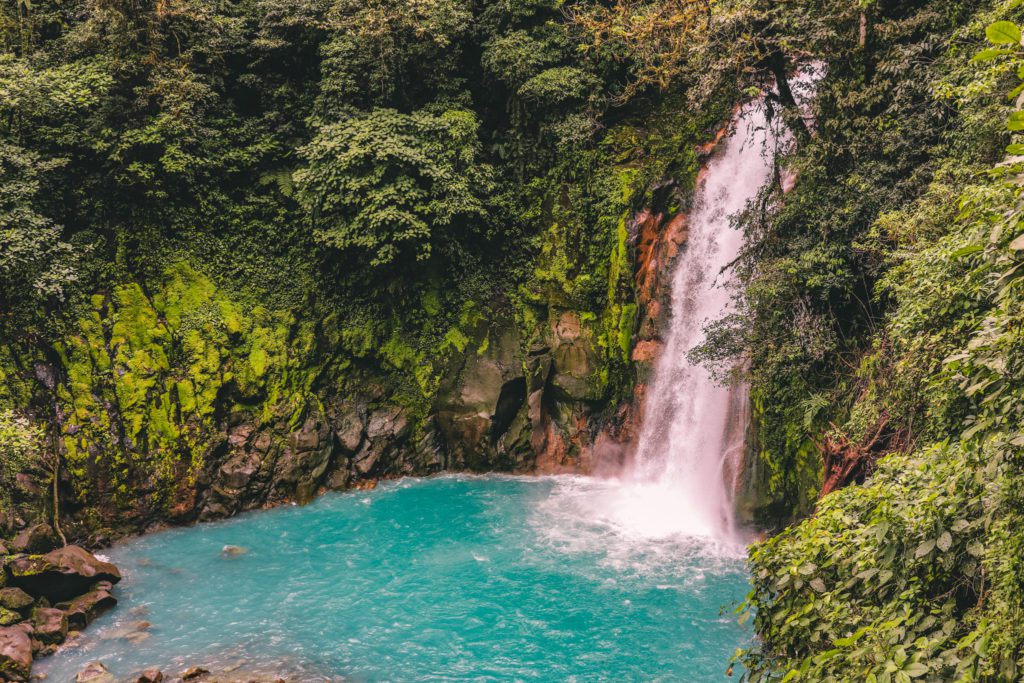
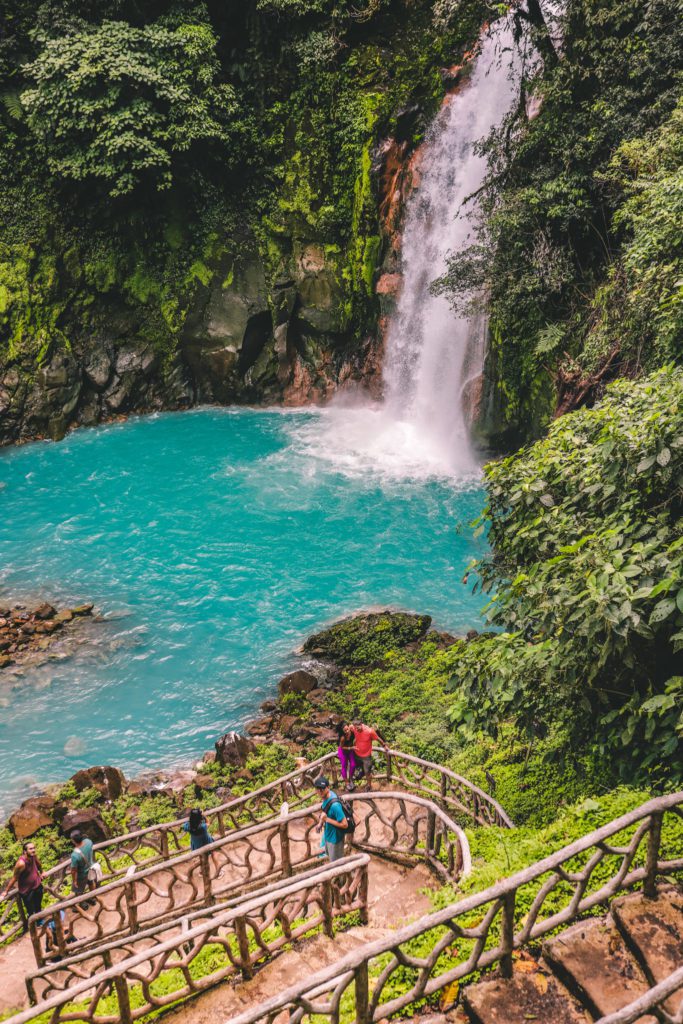
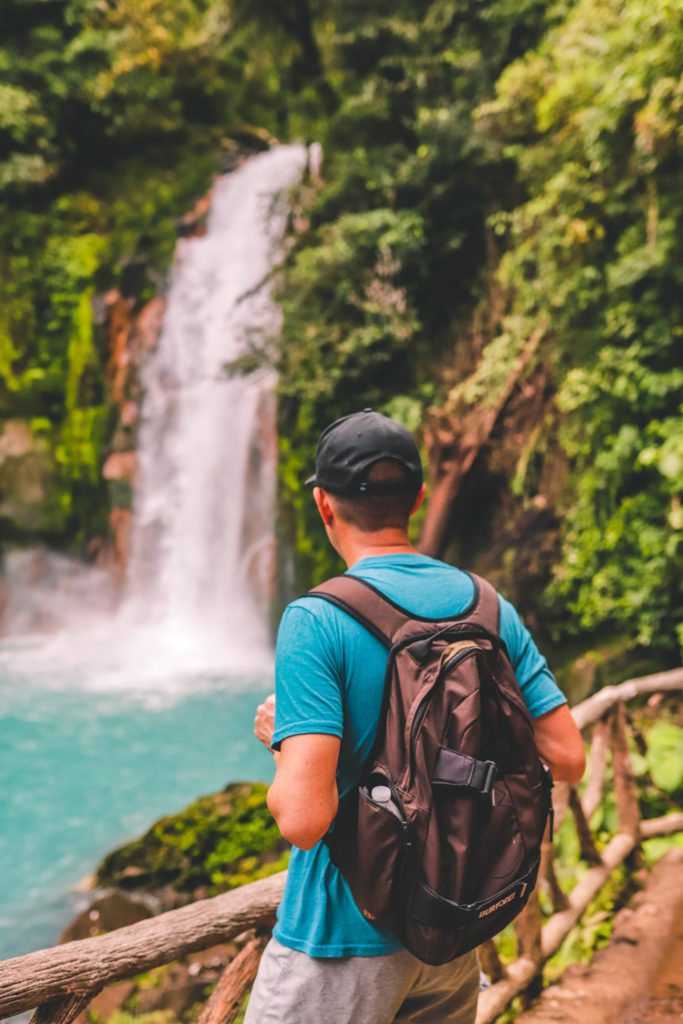
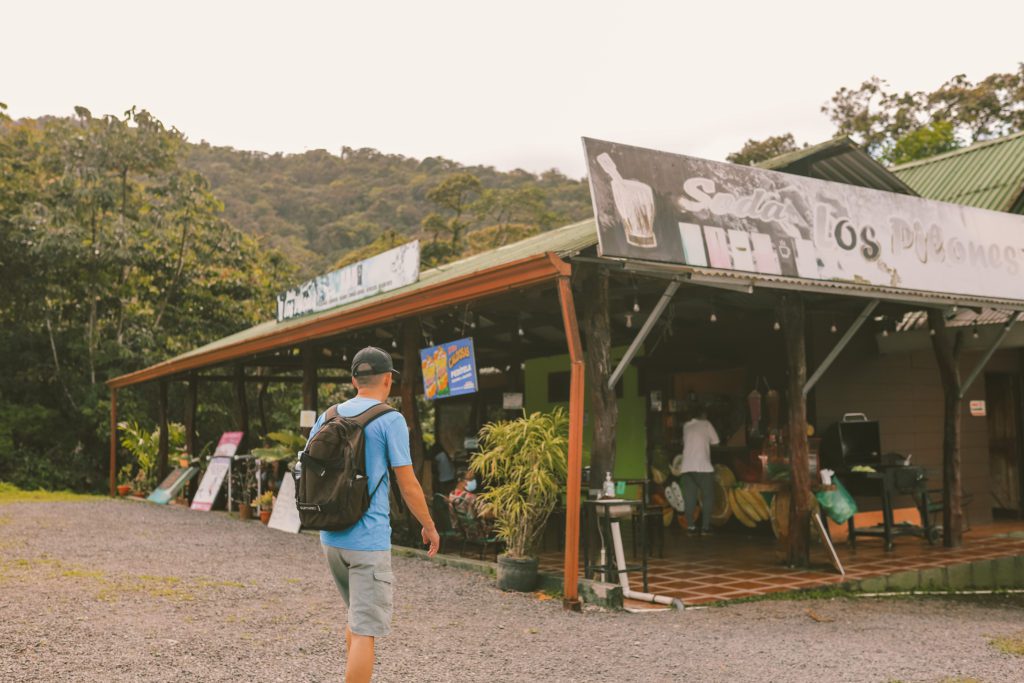


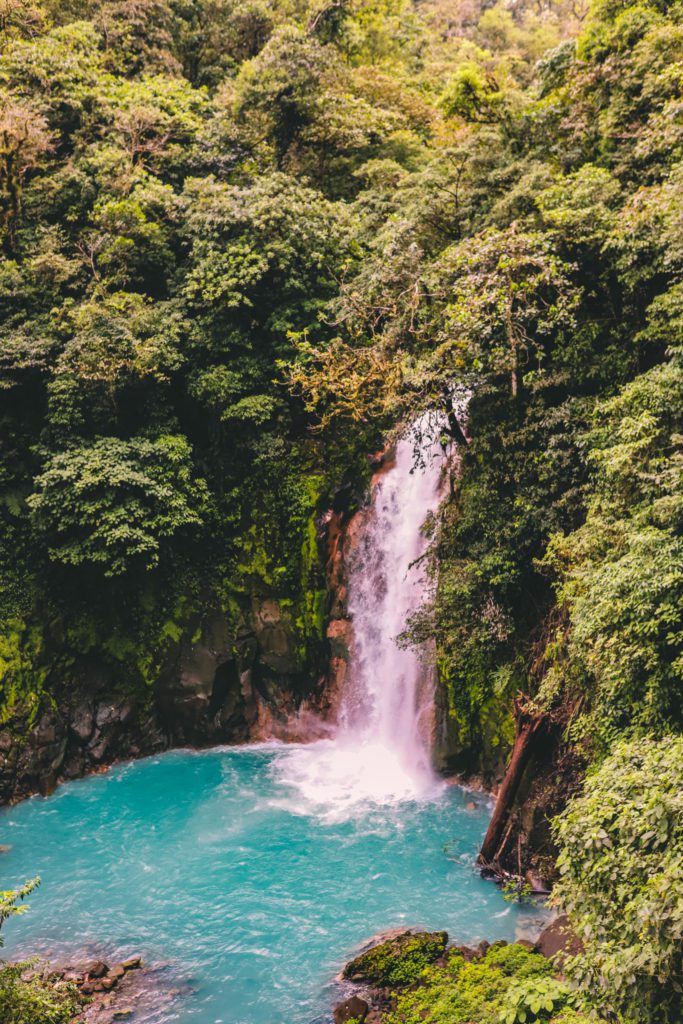
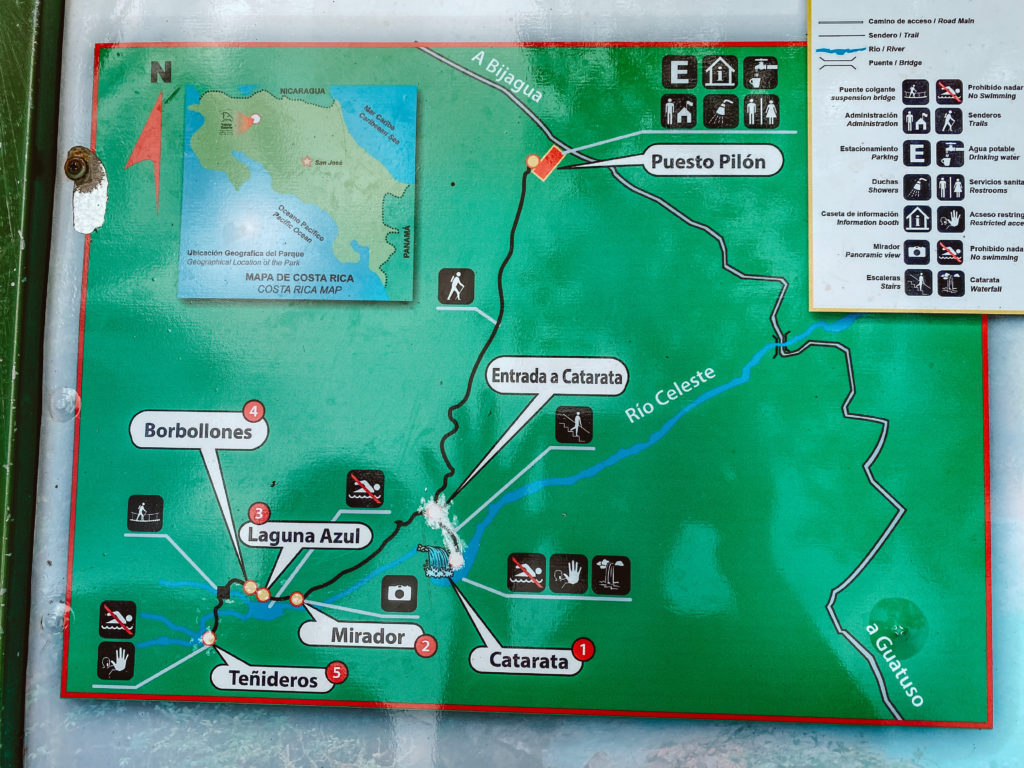


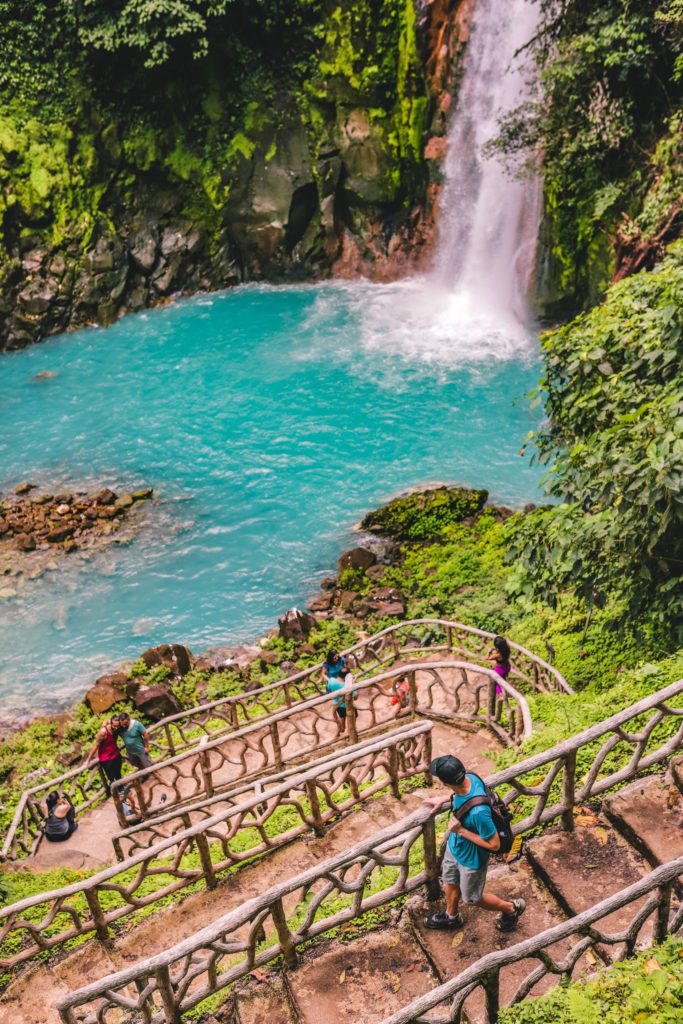

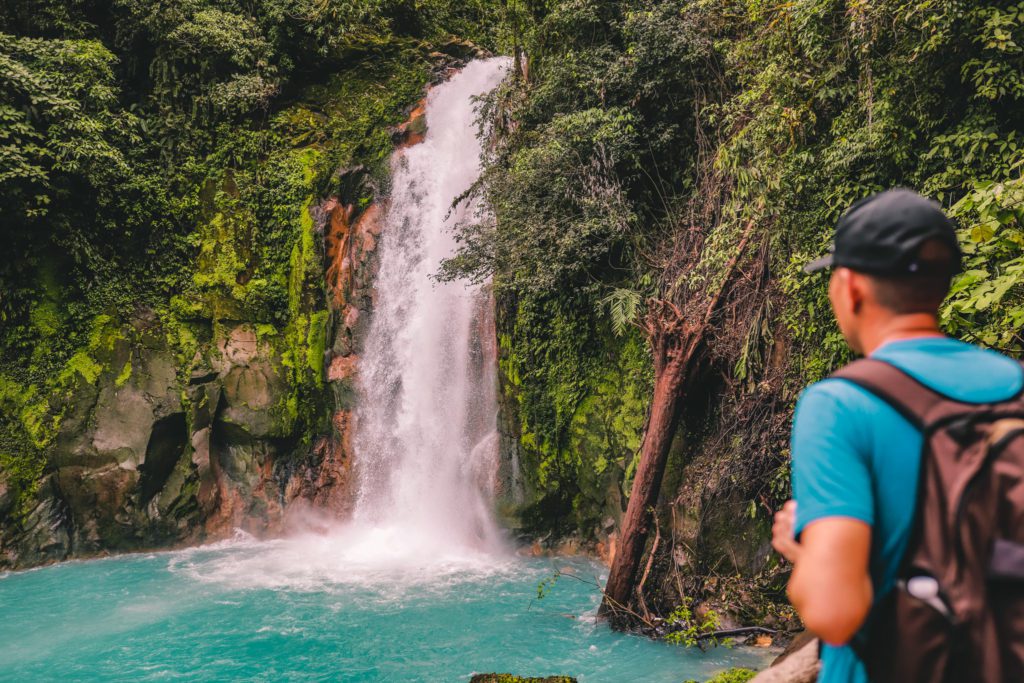
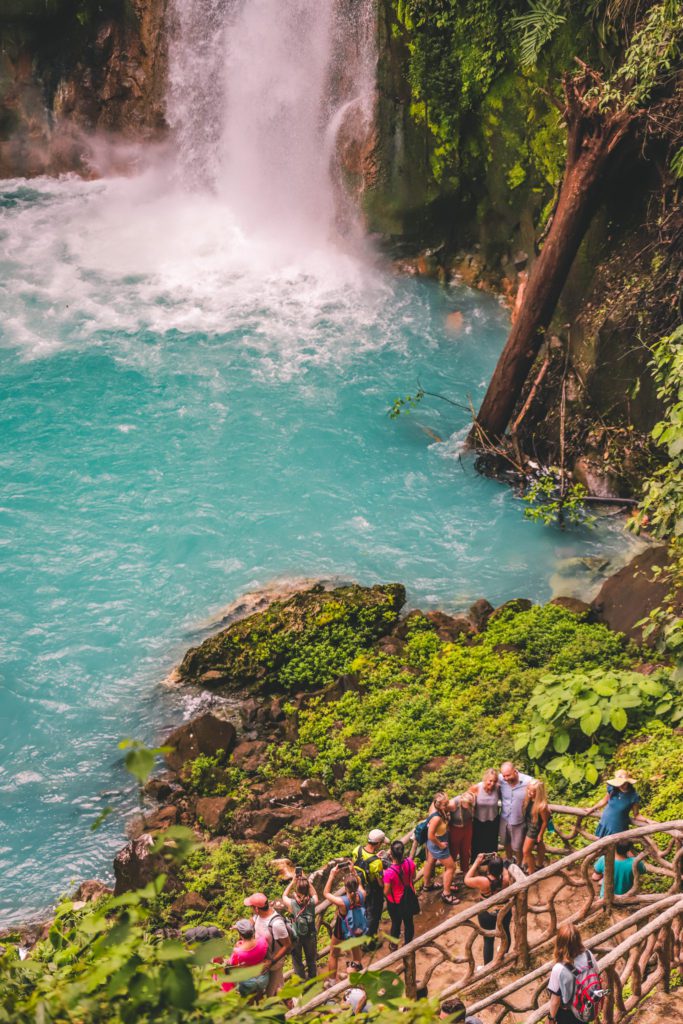
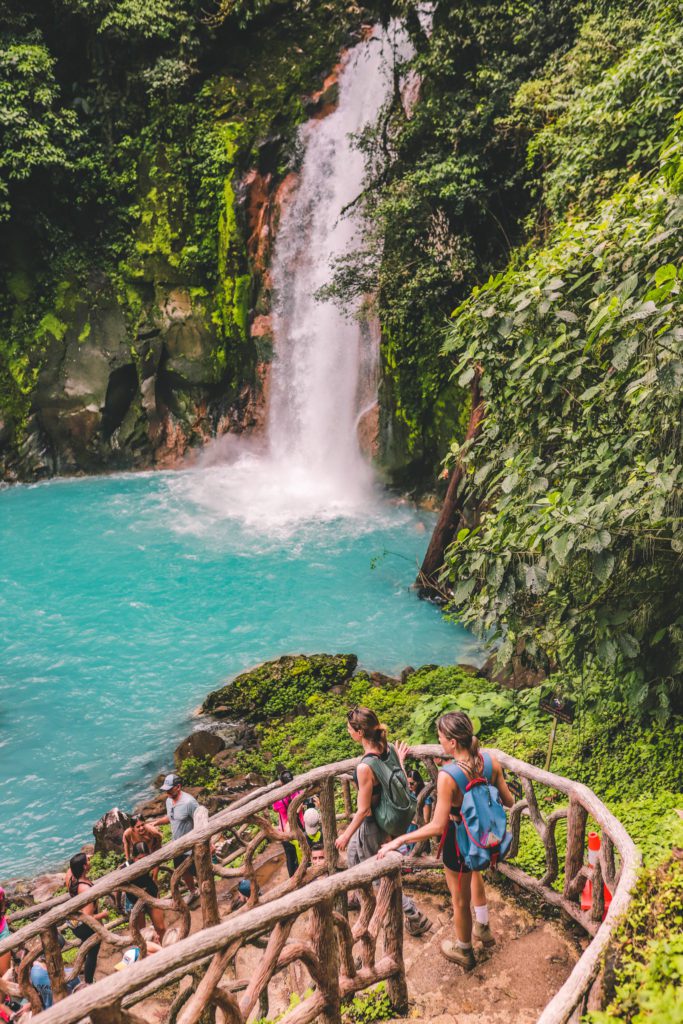
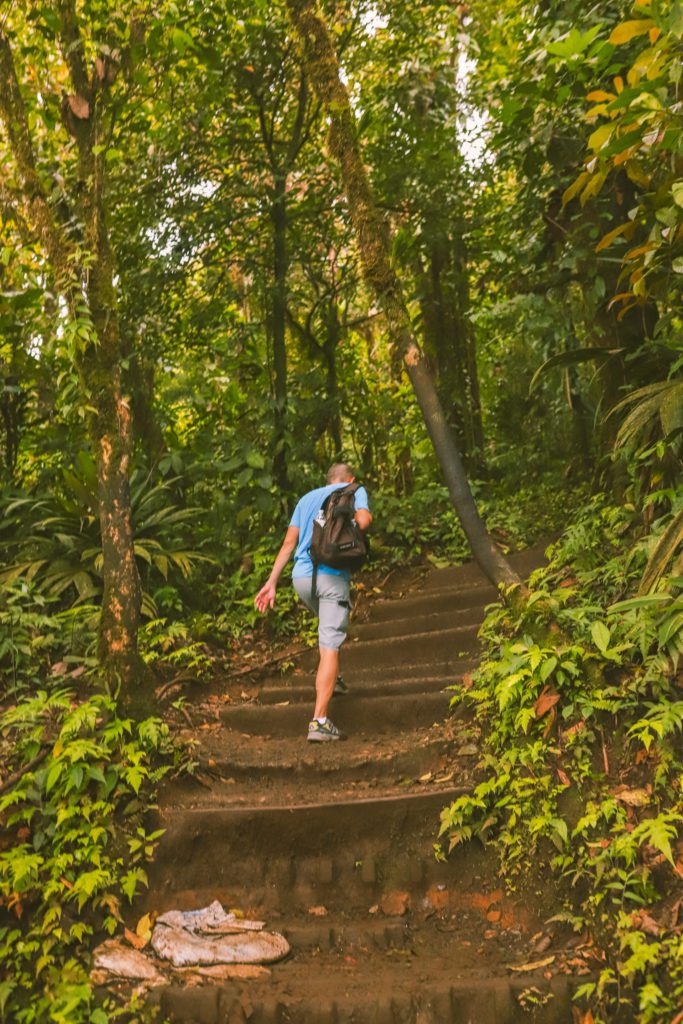
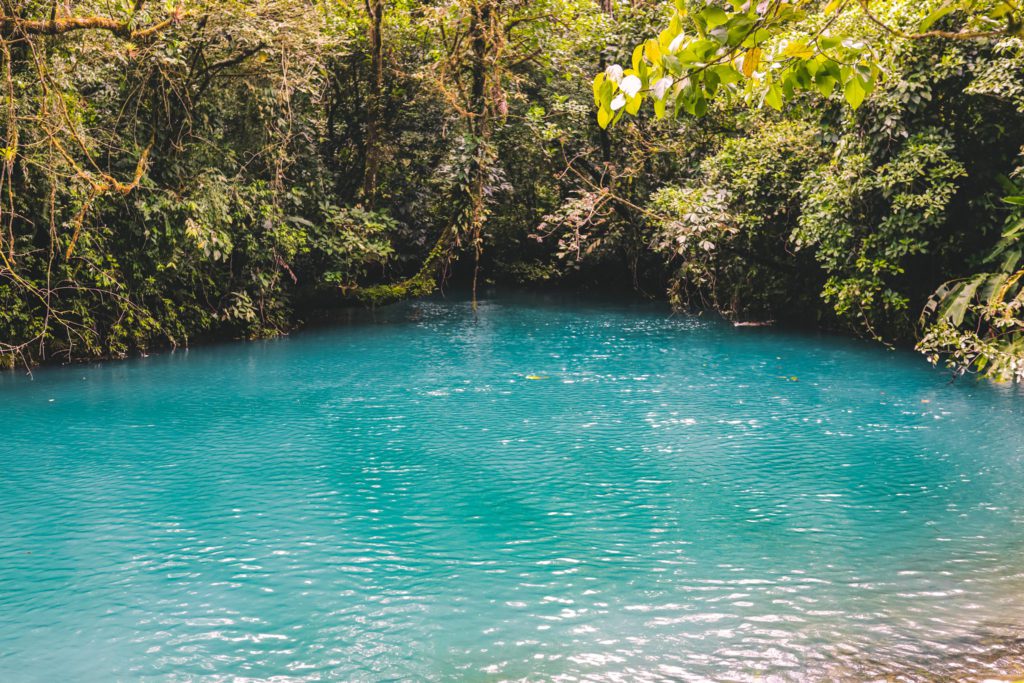
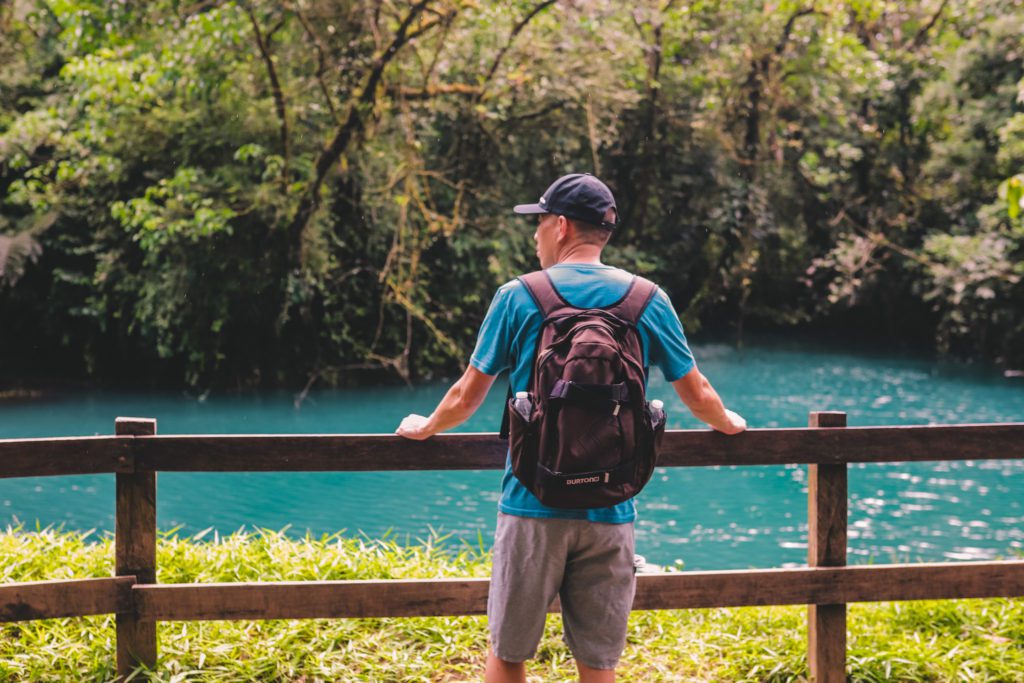
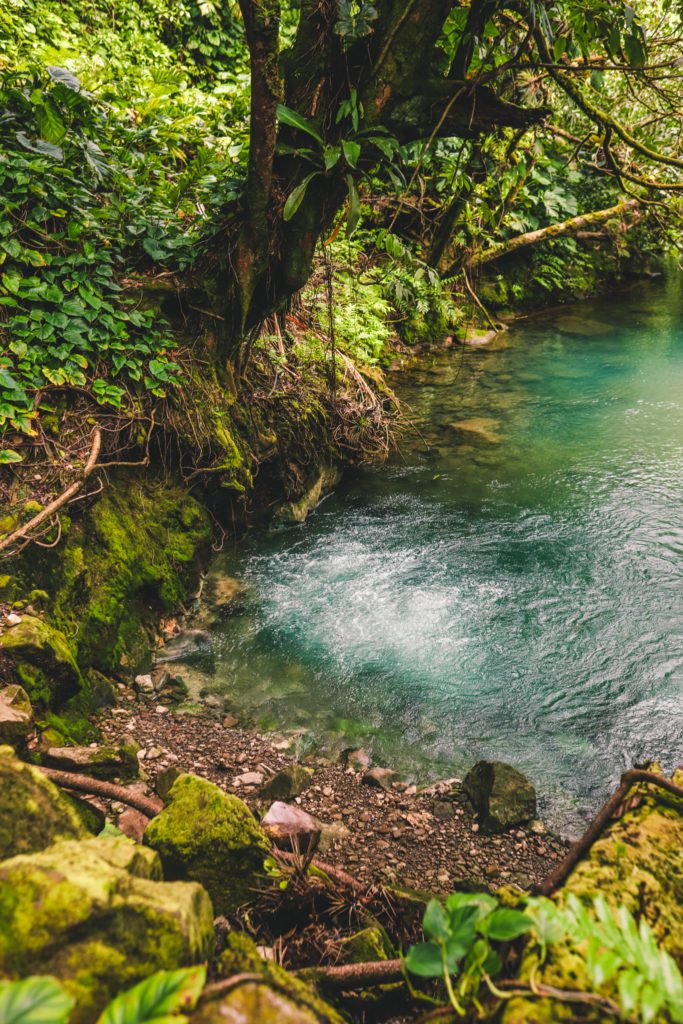
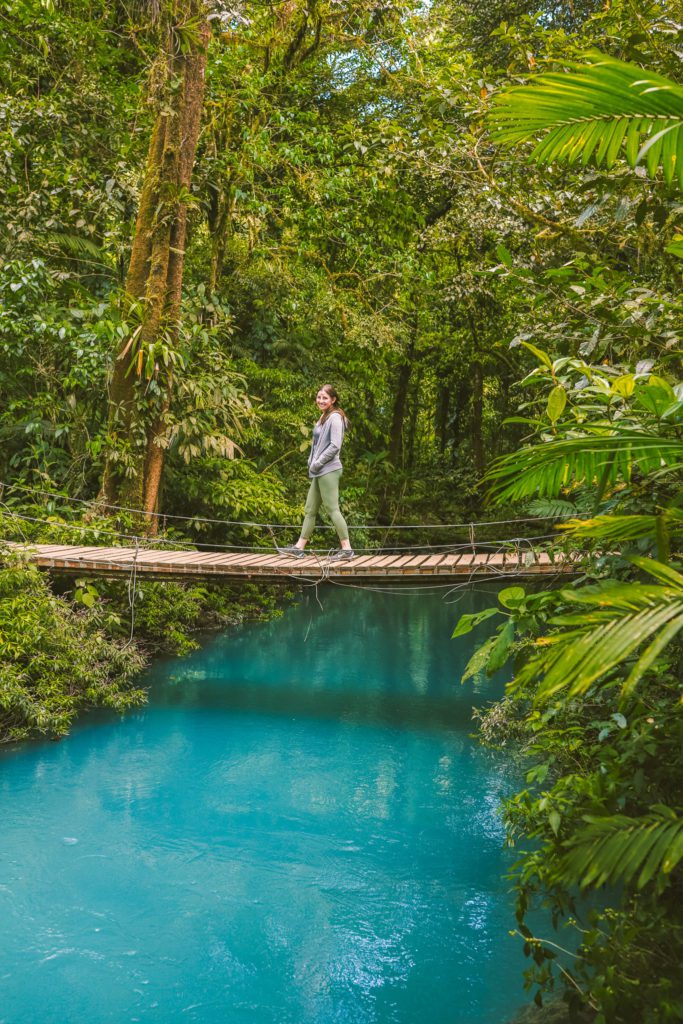


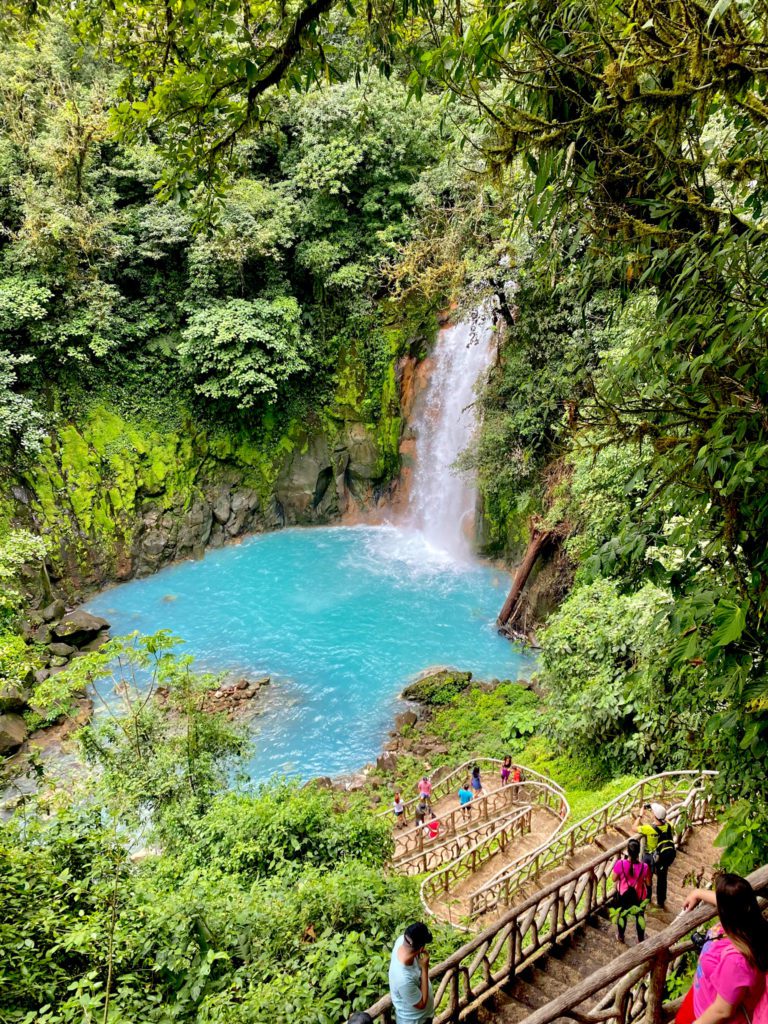
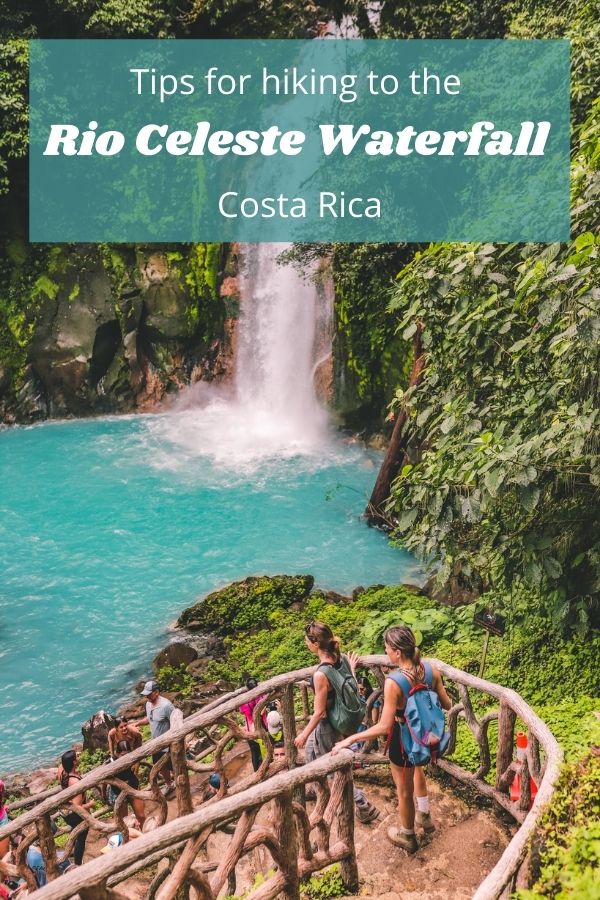
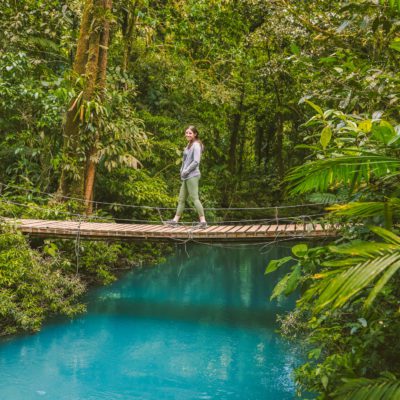

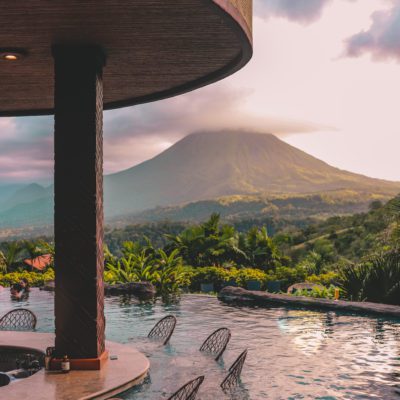
Thank you for this great review!